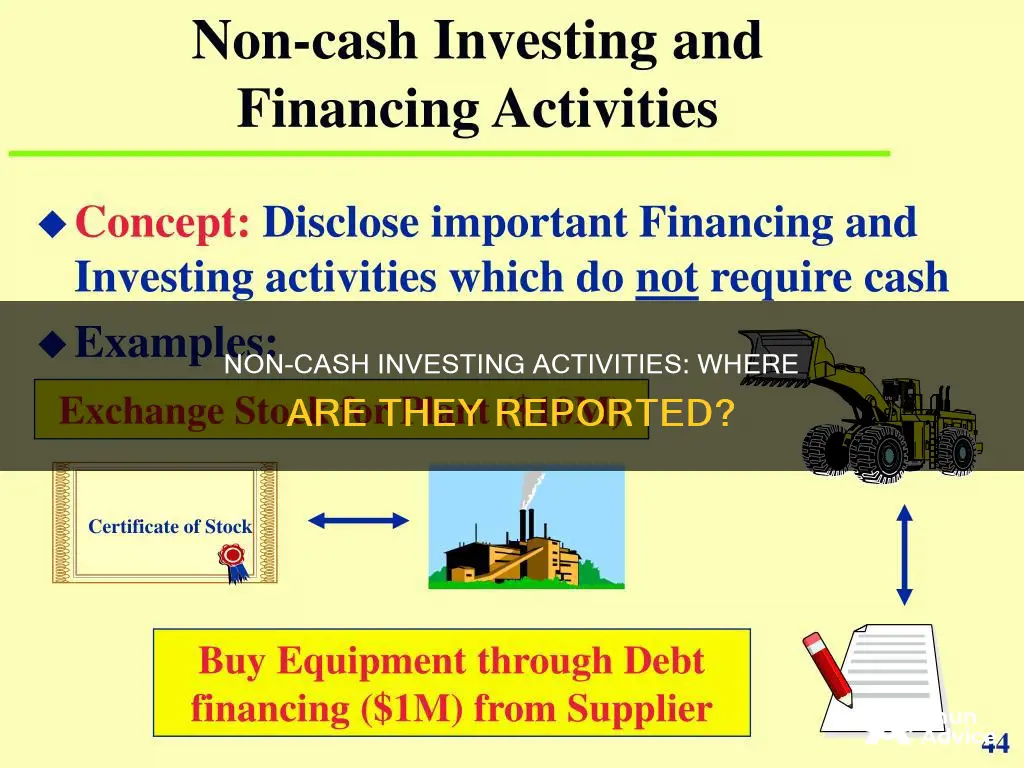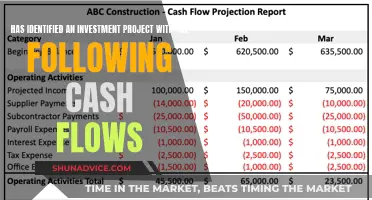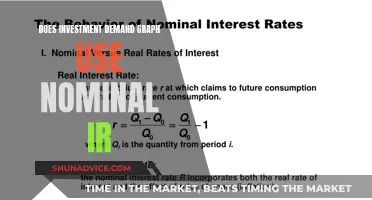
Non-cash investing and financing activities are those that do not generate cash flow. They are not reported on a company's cash flow statement as they do not involve cash inflows or outflows. However, they can still significantly impact a company's financial position and must be disclosed once a significant non-cash transaction is involved. These activities are reported in a separate disclosure supplement to the statement of cash flows, either as a footnote or in the notes to the financial statements. Examples of non-cash investing and financing activities include the issuance of stock to retire debt, the purchase of an asset by issuing stock, and the exchange of non-cash assets.
What You'll Learn

Issuing stock to retire debt
When a company issues stock to retire debt, it exchanges its debt obligations for equity capital. This can be done by offering creditors equity in the company in place of the debt owed. This strategy can be particularly attractive to creditors if the company is in financial distress and may be unable to repay its debts in full. By accepting equity, creditors become shareholders and gain a stake in the company's future profits and growth.
However, it's important to note that issuing stock to retire debt can also dilute the ownership stake of existing shareholders. As the number of shares outstanding increases, the percentage ownership of existing shareholders decreases. This dilution may impact the company's stock price and the influence of existing shareholders in decision-making processes.
In terms of reporting, non-cash investing and financing activities, such as issuing stock to retire debt, are typically disclosed in the company's financial statements. According to IFRS and US GAAP requirements, these activities are reported either at the bottom of the statement of cash flows as a footnote or in the notes to the financial statements. This disclosure ensures transparency and provides valuable information to investors and creditors when evaluating the company's financial health and performance.
Pension Plans: Cash, Investments, and Your Retirement Future
You may want to see also

Converting debt to equity
Non-cash investing and financing activities are those that do not generate cash inflows or outflows for a company but can still significantly affect its financial position and capital composition. These activities are not reported on the cash flow statement; however, they must be disclosed in a company's cash flow statement once a significant non-cash transaction is involved. This can be done either in a separate note or in a supplementary schedule.
One such non-cash activity is the conversion of debt to equity, which can be a useful method for a company to deal with its creditors. This is often done through a debt-for-equity swap, where a company exchanges its debt holdings for equity ownership by its lenders. This is usually conducted during bankruptcies, but can also be done to take advantage of favourable market conditions.
A debt-for-equity swap is often carried out when a company is unable to pay the face value of the bonds it has issued. In such cases, the company offers stock instead to delay repayment. The swap ratio between debt and equity can vary on a case-by-case basis, with businesses offering more advantageous ratios to entice creditors into the swap.
For creditors, a debt-for-equity swap may be a way to avoid the costs associated with recovering debt, especially in an environment where the full amount may not be recoverable. It also provides creditors with a chance to participate in any future growth of the company.
Debt-for-equity swaps can be implemented through a contractual or statutory procedure. The former is simpler and more flexible, with the company taking the lead role in preparing and negotiating the necessary documents. The latter is more complex and costly, usually being administered by an insolvency practitioner, but can be useful when the company is unable to negotiate with its creditors.
Understanding Net Cash Flow: Does It Include Investments?
You may want to see also

Non-cash asset exchange
- At the fair value of the asset received in the exchange. A gain or loss on the exchange should also be recorded.
- At the fair value of the asset transferred if this is more evident than the fair value of the asset received.
- At the recorded amount of the surrendered asset if no fair values are determinable or if the transaction lacks commercial substance.
It is important to note that if there is a significant amount of monetary consideration paid, or "boot", the transaction is considered monetary. In GAAP, a significant amount of boot is 25% or more of the fair value of the exchange. If the boot is less than 25%, the payer cannot recognise a gain on the transaction, while the recipient may do so if the monetary consideration is greater than a proportionate share of the surrendered asset.
Cash Value Investing: Strategies for Long-Term Wealth Preservation
You may want to see also

Common shares issued for dividends
Issuing common shares for dividends is a non-cash investing and financing activity, which means that it does not generate any cash inflows or outflows for the company. However, these activities can still significantly affect a company's financial position and must be disclosed in its cash flow statement.
Non-cash investing and financing activities are typically reported either at the bottom of the statement of cash flows as a footnote or in the notes to the financial statements. They may also be included as a separate schedule.
Other examples of non-cash investing and financing activities include:
- Converting debt to equity
- Acquiring productive assets by assuming directly related liabilities
- Obtaining a right-of-use asset in exchange for a lease liability
- Obtaining a beneficial interest as consideration for transferring financial assets (excluding cash)
- Exchanging non-cash assets or liabilities for other non-cash assets or liabilities
Corporations' Cash Investment Strategies: Unlocking Business Growth
You may want to see also

Capital expenditure
CapEx is typically reported on a company's balance sheet and cash flow statement. On the balance sheet, CapEx is capitalized and considered an asset, with the value slowly reduced over time through depreciation. On the cash flow statement, CapEx is reported under "investing activities" and may be listed as "capital spending", "purchases of property, plant, and equipment (PP&E)", or "acquisition expenses".
The calculation of free cash flow deducts capital expenditures, and this metric is one of the most important in finance, serving as the basis for valuing a company. The formula for free cash flow is:
FCF = Cash from Operations – Capital Expenditures
CapEx decisions are critical to the financial health of a company, as they can have a substantial effect on short-term and long-term financial standing. Wise CapEx decisions can help ensure a company's growth and maintenance of its business operations.
Cash Value Annuities: Securities Investment Options Explored
You may want to see also
Frequently asked questions
Non-cash investing and financing activities are not reported on the cash flow statement as they do not generate cash inflows or outflows. However, they are disclosed in a separate supplement to the statement of cash flows, either as a footnote or in the notes to the financial statements.
Examples of non-cash investing and financing activities include:
- Issuance of common shares for dividend purposes.
- Conversion of convertible bonds or preferred shares to common stock.
- Exchange of non-monetary assets.
- Acquiring a business through the issuance of stock.
- Converting debt to equity.
Non-cash investing and financing activities are important because they can have a significant impact on a company's financial position and future performance, even though they do not involve cash flows.
Non-cash investing and financing activities do not affect the cash flow statement directly, but they can impact the balance sheet and income statement. For example, the acquisition of property, plant, and equipment through non-cash activities will increase the company's productive capacity and affect its assets and liabilities.
Companies are required to disclose all significant non-cash investing and financing activities according to IFRS and US GAAP standards. This disclosure can be in the form of a footnote at the bottom of the statement of cash flows or included in the notes to the financial statements.







